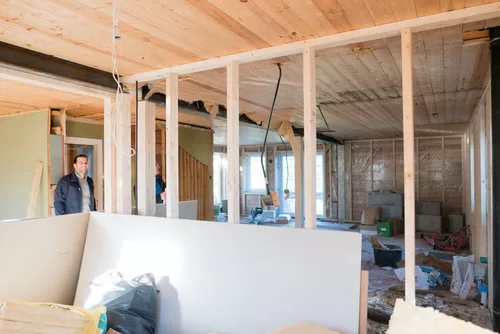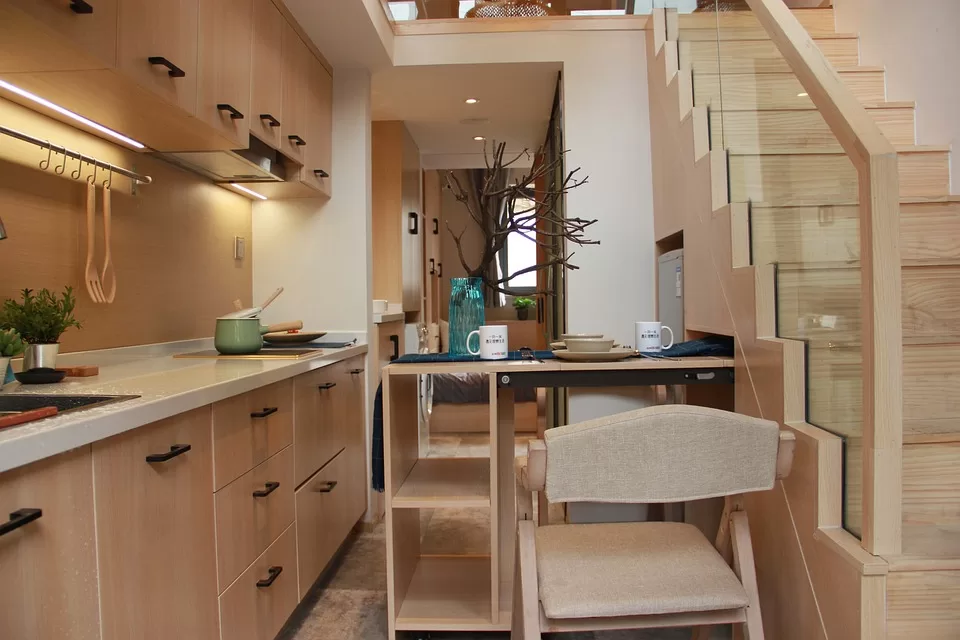Creating your dream home is an exciting prospect, but it often comes with a hefty price tag. Whether you’re planning to remodel your kitchen, add an extension, or update your bathroom, financing home improvement projects can be a challenge.

Fortunately, there are financing options available that can help you achieve your vision without breaking the bank. One such option is the availability of no and low-deposit home loans. In this comprehensive guide, we will explore five effective ways to finance your next home improvement project while staying within your budget.
Understanding No and Low Deposit Home Loans
No and low deposit home loans are mortgage options that allow borrowers to purchase or refinance a property without requiring a significant upfront deposit. These loans are particularly helpful for homeowners who want to fund their home improvement projects without depleting their savings.
With a no or low-deposit home loan, you can leverage the equity in your property to finance renovations, upgrades, or additions, bringing your dream home to life.
Read Also:
Benefits of No and Low Deposit Home Loans for Home Improvements
Choosing a no or low-deposit home loan to finance your home improvement project offers several advantages:
- Reduced Upfront Costs: Traditional home loans often require a substantial deposit, which can strain your finances. No and low-deposit home loans allow you to minimize the upfront costs, giving you the flexibility to allocate your savings towards renovations or other expenses.
- Access To Equity: If you have built up equity in your home, a no or low-deposit home loan allows you to tap into that equity and use it to finance your renovations. This means you can unlock the value of your property without the need for a large upfront payment.
- Competitive Interest Rates: No and low-deposit home loans typically come with competitive interest rates, making them an attractive financing option for homeowners. By securing a favorable interest rate, you can save money over the life of the loan, helping you manage your budget more effectively.
- Flexible Repayment Options: These loans often offer flexible repayment terms, allowing you to choose a repayment plan that suits your financial situation. You can opt for monthly, fortnightly, or weekly payments, depending on what works best for your budget.
Home Equity Loans: Utilizing Your Home’s Value
If you have accumulated equity in your home, a home equity loan can be a valuable option for financing your home improvement project. A home equity loan allows you to borrow against the value of your property, using your home as collateral.
This type of loan typically offers favorable interest rates and longer repayment terms, making it an ideal choice for significant renovations or remodeling projects.
Advantages of Home Equity Loans for Home Improvements
- Lower Interest Rates: Home equity loans often come with lower interest rates compared to other types of loans, such as personal loans or credit cards. This can result in significant savings over the life of the loan, making it a cost-effective financing solution for your home improvement project.
- Larger Loan Amounts: Since home equity loans allow you to borrow against the value of your home, you can access larger loan amounts compared to other financing options. This is particularly beneficial if you’re planning extensive renovations or major upgrades that require substantial funding.
- Potential Tax Advantages: In some cases, the interest paid on a home equity loan may be tax-deductible. It’s important to consult with a tax professional to understand the specific tax benefits and implications in your jurisdiction.
Personal Loans: Quick and Flexible Funding
Personal loans are unsecured loans that provide quick access to funds for various purposes, including home improvement projects. Unlike home equity loans, personal loans don’t require collateral. Instead, lenders evaluate your creditworthiness based on factors such as your income, credit history, and debt-to-income ratio.
Advantages of Personal Loans for Home Improvements
- Quick Access to Funds: Personal loans offer a streamlined application and approval process, allowing you to access funds quickly. If you have urgent home improvement needs or time-sensitive projects, a personal loan can provide the necessary funding without delay.
- Flexibility In Use: Personal loans provide you with the flexibility to use the funds as you see fit. Whether you’re planning to remodel your kitchen, upgrade your flooring, or invest in energy-efficient appliances, a personal loan gives you the freedom to allocate the funds according to your specific needs.
- No Collateral Required: Since personal loans are unsecured, they don’t require collateral such as your home or property. This can be advantageous if you’re not comfortable using your home as collateral or if you haven’t built up enough equity in your property.
- Fixed Repayment Terms: Personal loans typically come with fixed repayment terms, allowing you to plan your budget effectively. With a fixed monthly payment, you can easily manage your loan repayment alongside other financial obligations.
Credit Cards: Short-Term Financing Option
Credit cards can be a convenient short-term financing option for smaller-scale home improvement projects. While they may not be suitable for large-scale renovations, credit cards can help cover smaller expenses such as purchasing materials, fixtures, or appliances.
Considerations When Using Credit Cards for Home Improvements
- Interest Rates: Credit cards often come with higher interest rates compared to other financing options. It’s crucial to understand the interest rates associated with your credit card and consider whether the cost of borrowing outweighs the benefits of using the card for your home improvement project.
- Credit Limit and Available Credit: Before relying on credit cards, ensure that you have a sufficient credit limit to cover your expenses. Additionally, consider how using your credit card for home improvements may impact your available credit for other financial needs.
- Repayment Plan: To avoid accumulating excessive debt, it’s important to have a repayment plan in place when using credit cards for home improvements. Set a realistic timeline for paying off the balance and make regular payments to minimize interest charges.
- Rewards And Benefits: Some credit cards offer rewards programs or benefits that can be advantageous for your home improvement project. For example, certain cards provide cashback rewards or points that can be redeemed for home improvement-related purchases. Explore these options to maximize the benefits of using credit cards for your project.
Government Grants and Assistance Programs: Exploring Available Support
Government grants and assistance programs can be valuable resources for homeowners seeking financial support for their home improvement projects. These programs vary depending on your location and specific circumstances.
They can provide funding or subsidies for various aspects of home improvement, including energy-efficient upgrades, accessibility modifications, or historic preservation.
Benefits of Government Grants and Assistance Programs
- Financial Assistance: Government grants and assistance programs provide financial support that can significantly offset the costs of your home improvement project. This can make your dream home more attainable and affordable.
- Specific Project Focus: Some programs target specific types of home improvements, such as energy efficiency or accessibility enhancements. By leveraging these programs, you can align your project with the goals and requirements of the grant or assistance program, ensuring you meet the necessary criteria.
- Expert Guidance: Government programs often provide resources and guidance to help homeowners navigate the application process and understand the requirements. These resources can offer valuable insights and assistance in securing the necessary funding for your home improvement project.
- Environmental Benefits: Many government programs focus on promoting sustainability and energy efficiency in homes. By participating in these programs, you contribute to a greener future while reaping the financial benefits of reduced energy consumption.
Conclusion
Financing your home improvement project doesn’t have to be a daunting task. With the availability of various financing options, including no and low-deposit home loans, you can turn your dream home into a reality while staying within your budget.
Consider the advantages and considerations of each financing option discussed in this guide to determine which one aligns best with your needs and financial situation.









